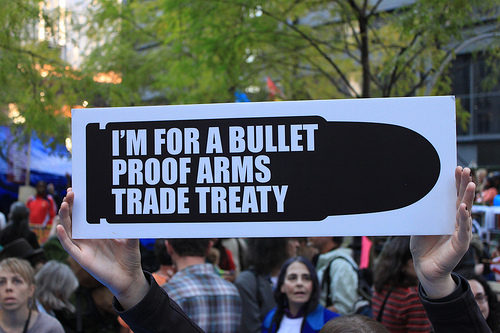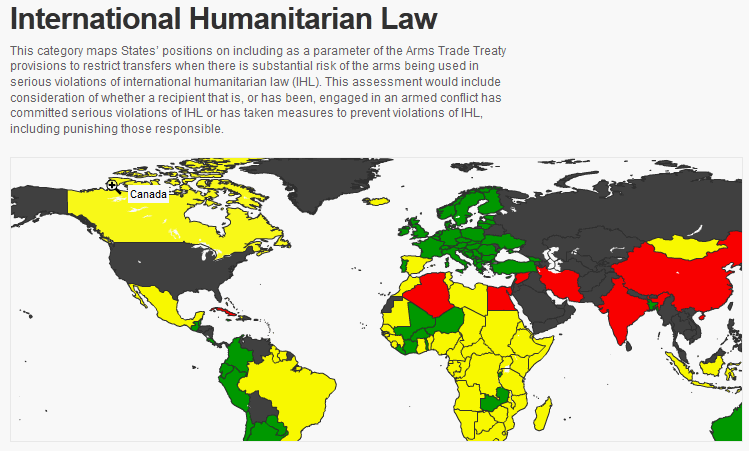
While the ISN is examining the relationship between economics and war this week, UN delegations in New York are gathering for the last preparatory meeting on a treaty to regulate the global arms trade. After years of advocacy, preparation and dialogue, representatives from all UN member-states will meet in July for the UN Conference on the Arms Trade Treaty (ATT). While expectations surrounding the treaty are very high in some quarters (as “one of the most important treaties the world has ever seen”, according to Kate Allen of Amnesty International UK), many remain skeptical.
What is the treaty about? The aim of the ATT is to regulate the import and export of conventional weapons (and related products and services) on a global scale. While for some states the goal is merely to curb illicit trade in arms (i.e., mainly smuggling), others are aiming higher. Advocates of a strong and comprehensive ATT want to prevent arms exports to states which don’t comply with international humanitarian law and human rights law.
In response to such high standards, some states accuse the West of wanting to stop the export of weapons to certain states altogether, which would deny them the right to self-defense, or so critics argue. Many states in Latin America and sub-Saharan Africa, on the other hand, are suffering from systematic violence throughout their societies and would welcome a strong ATT to help reduce the number of small arms and light weapons in circulation. Other states, mainly Western countries with strict export regulations already in place, expect the ATT to create a level playing field for their defense industries to compete globally.
Despite these diverging goals and views, most member-states want an inclusive, global treaty with universal application. Whether consensus can be achieved around a strong and comprehensive text now depends on the skill of diplomats.
To provide a basis for negotiation, Roberto García Moritán, the Chairman of the Preparatory Committee in session this week, has prepared a non-paper (yes, a non-paper, to make clear that the document is unofficial), which gives an idea of what the future ATT might look like.
The ATT has brought together a large community of NGOs which follow the negotiations closely and report and comment on the latest developments. One group has created interactive world maps which provide an overview of the positions of individual states. By clicking on a particular state, one can see its positions on ATT-related questions, such as: should ammunition be included in the treaty? should exports only be allowed to states which respect international humanitarian law? Alternatively, clicking on an issue brings up a map showing which countries support and oppose it.

Thinking of today’s ISN Special Feature, “The Arms Trade – Rich Sellers, Poor Buyers, Failing Regulation“, one can see (for example) that India and Pakistan, which have recently become the world’s biggest weapons importers, oppose tight restrictions regarding human rights. The other states that oppose the inclusion of language requiring compliance with international human rights law in the treaty are Algeria, China, Cuba, Syria and Thailand.
For further information on the topic, see our Digital Library holdings on the Arms Trade Treaty.

